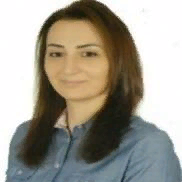
Nazife Cevik
Work place: Computer Engineering, Istanbul Arel University, Istanbul, Turkey
E-mail: nazifecevik@arel.edu.tr
Website:
Research Interests: Image Processing, Image Manipulation, Computational Learning Theory, Computer systems and computational processes
Biography
Nazife Cevik obtained the PhD. degree from Istanbul University in 2012. She joined the Computer Engineering Department at Istanbul Arel University in 2015 and continues to work as an Assistant Professor. Her research interests are Image Processing and Machine Learning and Bioinformatics.
Author Articles
Discrete Wavelet Transform based High Performance Face Recognition Using a Novel Statistical Approach
DOI: https://doi.org/10.5815/ijigsp.2018.06.01, Pub. Date: 8 Jun. 2018
Biometrics has gained significant popularity for individual identification in the last decades as a necessity of supporting especially the law enforcement and personal authentication required applications. The face is one of the distinctive biometrics that can be used to identify an individual. Henceforth, Face Recognition (FR) has attracted the great interest of the scientists and academicians. One of the most popular methods preferred for FR is extracting textual features from face images and subsequently performing classification according to these features. A substantial portion of the previous texture analysis and classification studies have based on extracting features from Gray Level Co-occurrence Matrix (GLCM). In this study, we present an alternative method that utilizes Gray Level Total Displacement Matrix (GLTDM) which holds statistical information about the Discrete Wavelet Transform (DWT) of the original face image. The approximation and three detail sub-bands of the image are first calculated. GLTDMs that are specific to these four matrices are subsequently generated. The Haralick features are extracted from those generated four GLTDMs. At the following stage, a new joint feature vector is formed using these four groups of Haralick features. Lastly, extracted features are classified by using K-NN algorithm. As demonstrated in the simulation results, the proposed approach performs promising results in the context of classification.
[...] Read more.Other Articles
Subscribe to receive issue release notifications and newsletters from MECS Press journals